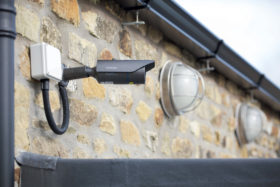
Learn from the experts with our online training course!
Use the code BUILD for 20% off
Learn from the experts with our online training course!
Use the code BUILD for 20% offEver wandered down a street picking out which of the houses you wish you owned? If so, I’ll bet it was the one with the best front door. It may seem a trivial game, but it underlines a point we often make in the magazine: first impressions count.
Whatever style of home you’re creating, and whether you’re self-building or renovating, the entrance is likely to not only underpin the external aesthetic, but also set the tone for your interior design choices.
A big trend in recent years has been towards fitting oversized doors – perhaps as large as 3m tall and 1.4m wide – surrounded by plenty of glazing (usually safety glass to meet Building Regulations requirements). “A lot of self-builders recognise the benefits of natural sunshine, so they’ll look to combine their front doors with sidelights and fanlights,” says Matt Higgs from Kloeber.
That doesn’t necessarily mean going for an outlandish design. In fact, plain finishes and minimal detailing tend to deliver the kind of sleek effect that works best in a modern setting. “Of course, some people want to add a bit of extravagance to their design, but a lot of self-builders and renovators want simple, clean lines like they would have with their interiors – following the idea that less is more,” says Elizabeth Assaf from Urban Front.
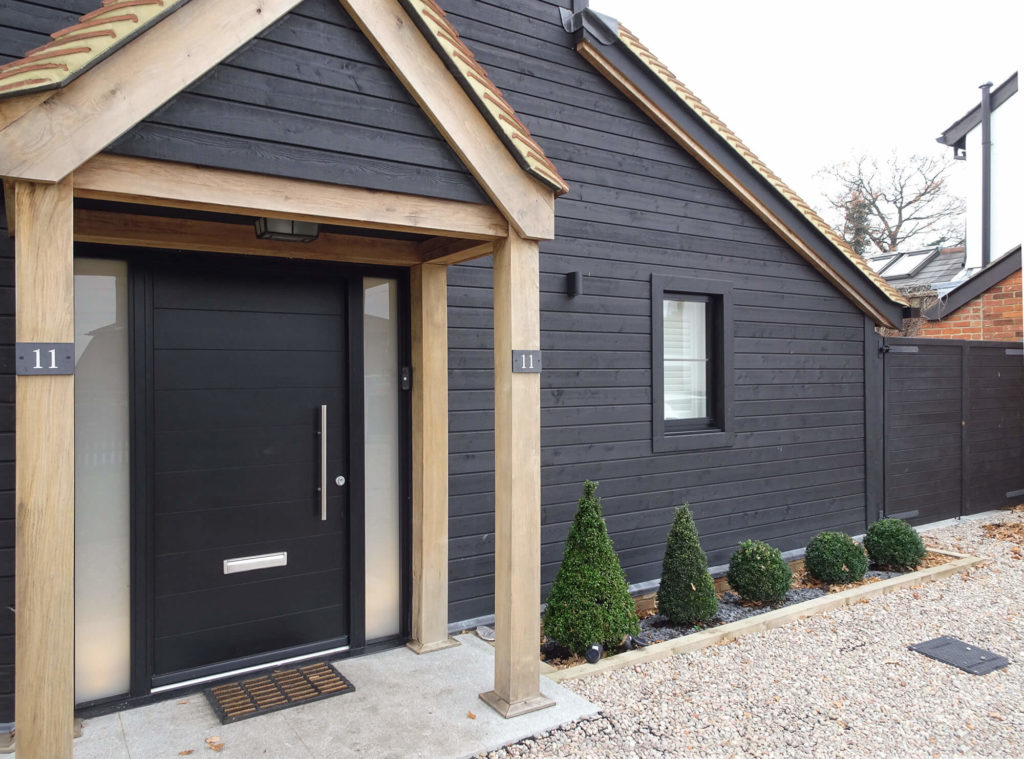
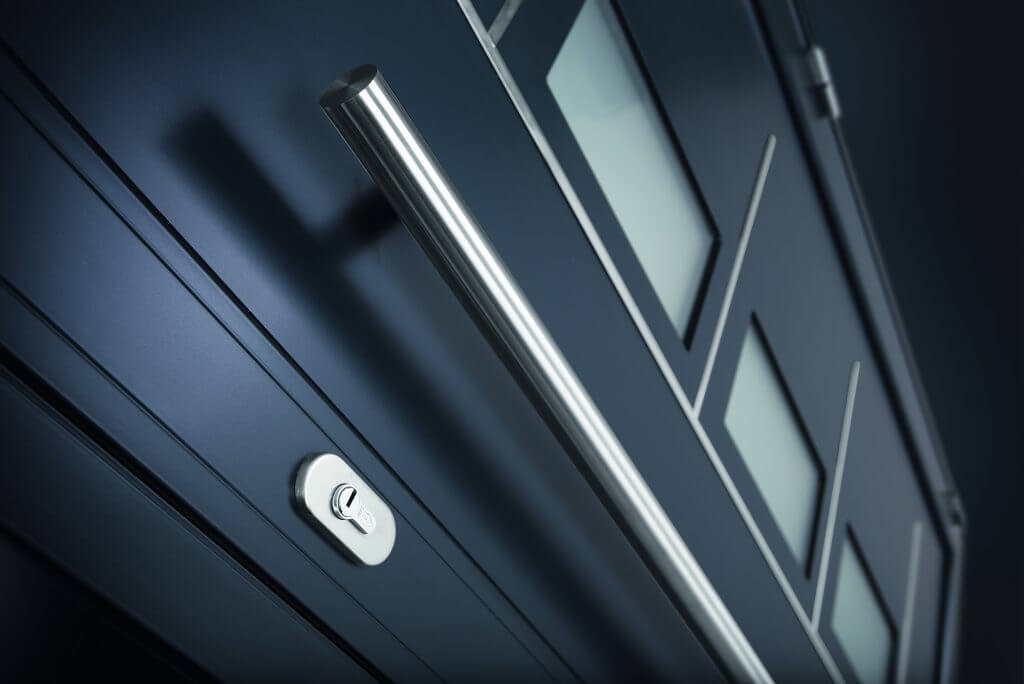
Doing this successfully relies on achieving a very good level of finish – especially if you want the door, frame and glazing to be flush and level. So working with a specialist supplier and trusted installers is crucial.
A minimal look can suit some period properties, too. “There are so many homes that look, externally, like they’re going to be quite traditional – but inside they’re really contemporary,” says Elizabeth. “We get a lot of requests for designs that will bridge that gap – and we now have a range called Form that’s intended to do just that.”
You can achieve a contemporary look with just about any type of frame and door core – although for a durable, high-quality result, you’ll want to opt for something that delivers on performance as well as aesthetics.
Composite versions, which combine steel reinforcement with a PVCu or GRP finish, offer a good starting point. These days, they’re available in pretty much any RAL colour as well as a range of woodgrain finishes. But if you want a bespoke result, you’ll probably want to opt for a high-quality wood veneer door (sometimes referred to as engineered products) or a metal unit (steel or aluminium). Both can deliver excellent security, energy performance and the opportunity to opt for larger sizes.
One way to set your design apart is to opt for an adventurous hue. “Homeowners are definitely being a bit bolder with their colour palettes, using bright oranges, pinks and yellows for instance,” says Matt. “I think that’s especially true for renovators, who don’t necessarily have as much choice as self-builders in terms of elements such as what size of door they can install.”
Elizabeth identifies a real trend towards raw finishes. “In the past, most of our timber doors were lacquered as people liked the ease of upkeep – but now they’re usually oiled, which looks more natural,” she says. The downside of this kind of design is that it requires more maintenance.
“It depends on a variety of factors, such as the location and orientation of the door, type of timber used etc, but an oiled finish might need reapplying every couple of months or last as long as three years,” says Elizabeth. “But even when you give people all the information, they still want the most natural look they can get.”
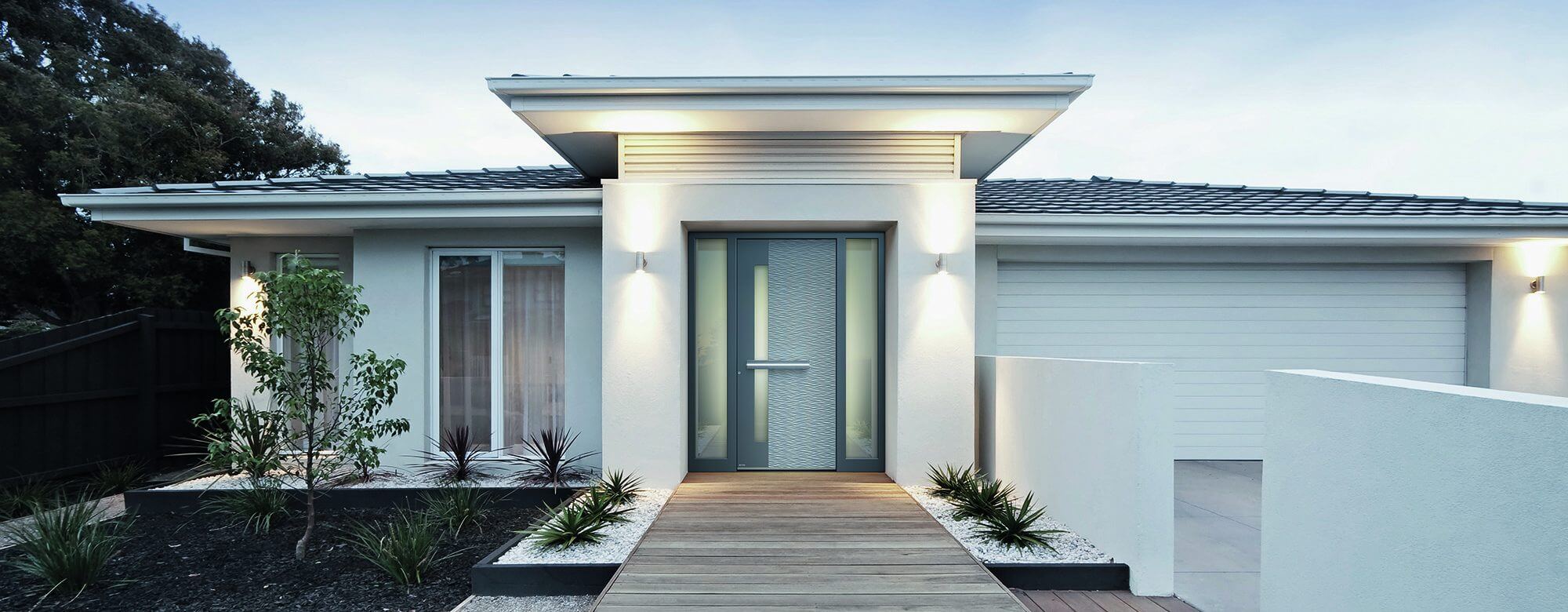
Opting for an overhang – which could be anything from a simple canopy through to a setback door located beneath a cantilevered section of building – can help to minimise upkeep. “If there’s only about a metre of overhang, we’d call that semi-exposed, as half the door will still get sun and rain,” says Elizabeth. Such nuances could have a big impact on your maintenance schedule or affect your choice of materials.
If your goal is to create a home for the long term, then you shouldn’t base your specification decisions simply on what a new door will look like today. Instead, try to think about how it will perform in five or 10 years time. Will you want to be regularly sanding down and refinishing an oiled timber finish, for example? And can you live with the scratches a statement-making bronze design is likely to collect?
Energy performance could have a major impact on your choice. Just last year, vast pivot doors (where the hinges are inset at the top and bottom of the opening leaf) were all the rage. “The thing about pivots is that there will always be a 1mm gap at the top and bottom that isn’t completely covered with a weather seal,” says Elizabeth. “It will still perform well, but it won’t offer the level of airtightness you’d need if you were trying to achieve a Passivhaus or zero carbon build.” As a result, many homeowners are now moving back to side-hung configurations.
Overall the message is clear: yes, go for the wow factor – but be certain you’ll get the performance you want both now and over the long term. The two things don’t have to be mutually exclusive. “You can still have a 1.2m-wide door on conventional hinges,” says Elizabeth.
When it comes to accessorising with hardware, the world’s your oyster. “Bar handles are very popular for modern designs and we do a range from 600mm up to pretty much the full height of the door,” says Matt. You can choose between cylinder, square and flat profiles to suit your tastes and the feel you’re after. “It’s also more secure than a lever handle because as soon as you shut the door, it’s automatically locked,” says Matt.
If security is an important consideration, you could consider upgrading to high-tech keyless entry systems, such as smartphone-operated locks or fingerprint access.
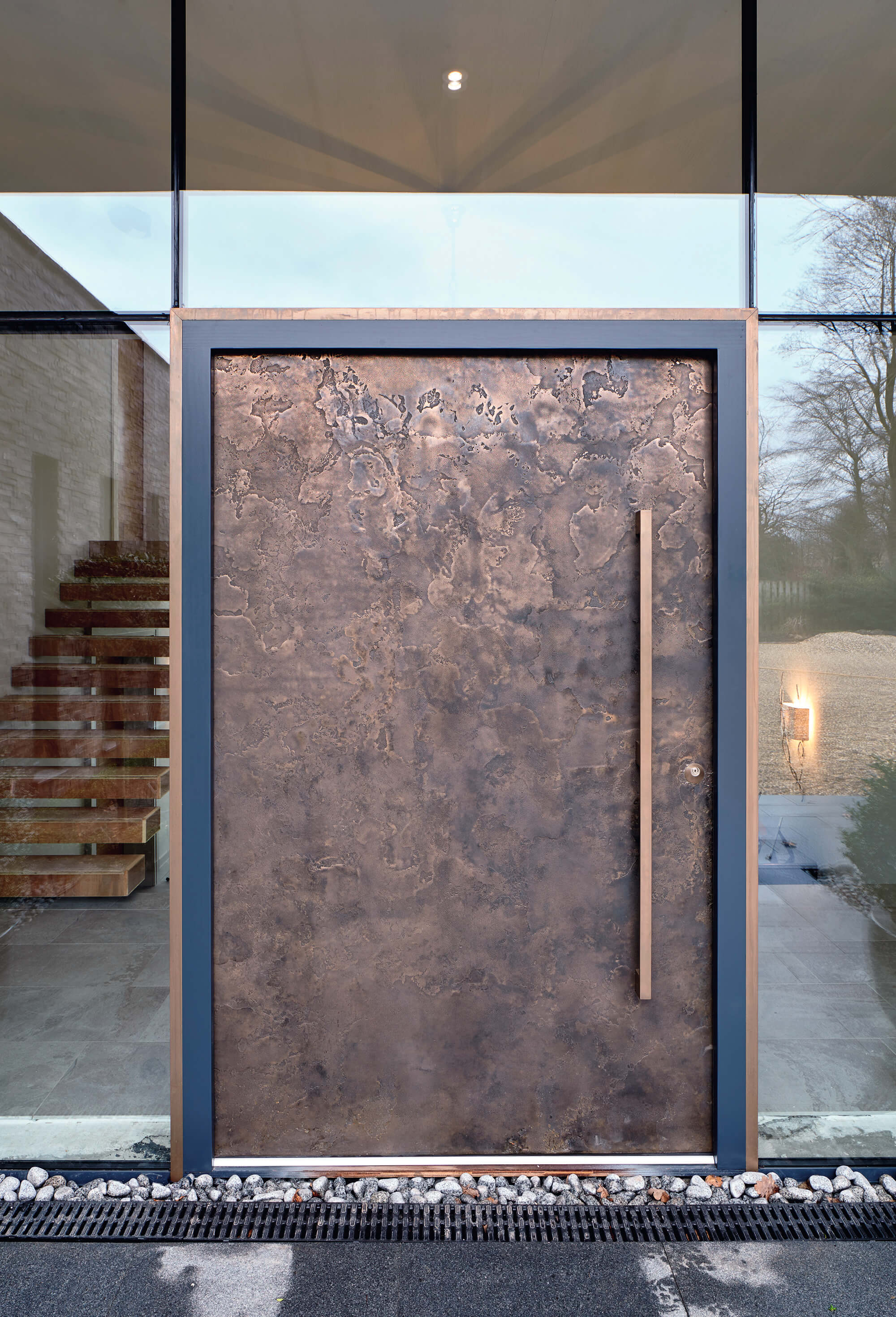
Urban Front’s Raw E80 bronze hinged oversized doors, with painted RAL frame, is priced from £12,500
One thing to bear in mind when you’re planning a contemporary design is that, should you get it wrong, it can easily start to resemble a commercial entrance – and this is where you need to focus on getting the details right. An oversized door is one thing, for instance, but it doesn’t necessarily have to be matched with the biggest handles and knobs. In fact, you may not need to use conventional ironmongery. “You can even opt for concealed versions where there’s nothing visible on the door,” says Elizabeth.
Decluttering the main panel will help to underpin a modern look. “People are moving away from integrating letterboxes, for instance – instead they’re fitting separate postboxes on the wall,” says Matt. “That’s partly down to aesthetics and preserving the look, but also because of thermal efficiency. If you put a hole in your door, that’s obviously going to compromise performance.”
Another choice that’s falling out of favour is door-mounted house numbers. “When you’re spending £1,500 or more on a unit, you don’t want to screw something into it and possibly mess it up,” says Matt. Walls, porches and glazing all offer the opportunity to integrate plaques and numbers in a more minimalist way. “We can do opaque glass with a clear number on it or vice versa,” says Matt.
